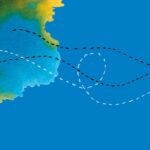Geographic Origins
The Republic of Armenia is a landlocked country in Asia. It is bordered by Georgia, Azerbaijan, Iran and Turkey.
History of Immigration and Settlement
South Australia’s Armenian community is very small. Most Armenians who live in South Australia are the descendants of Armenians who survived the 1915 genocide of Armenians perpetrated by the Ottoman Turks and settled in Middle Eastern countries after the First World War. They came to South Australia as refugees after 1963 from countries including Palestine, Egypt, Syria, Iraq and Lebanon, emigrating because of their uncertain future as minority groups in these lands. Because they had lived in a variety of places before their migration to Australia, most Armenians were multilingual and spoke English upon arrival. The last significant wave of Christian Armenians arrived in South Australia from Iran after the 1980 Islamic Revolution. On 25 March 2009 the Legislative Council of South Australia unanimously recognized the Armenian genocide by the Ottoman State that occurred between 1915 and 1923. On 30 April 2009 the South Australian House of Assembly unanimously passed a motion in recognition of the Armenian, Pontian Greek and Assyrian Genocides.
Community Activities
The Armenian Cultural Association of South Australia was founded in 1960. Since then it has played an important role in welcoming, uniting and supporting newly arrived Armenians to South Australia.
The Armenian community in Adelaide is not large enough to support the foundation of an Armenian Apostolic Church. Consequently, many Armenians left South Australia to settle in larger Armenian communities in Melbourne and Sydney. However, despite Adelaide’s small Armenian community the Association promotes many cultural activities. These include community events and workshops on cooking and baking as well as traditional dancing. Since 2014 a dance group has represented Armenian culture through Armenian traditional dances, music and costumes. The dance group has become well-known and successfully performed at many multicultural and social events.
Armenian food is typical of the eastern Mediterranean region. It includes delicacies such as kebabs, marinated meat which is grilled on a skewer with onion and capsicum. At social gatherings, members of the association dance traditional steps such as the kochari, a very fast dance that is performed in a circle.
The community celebrates Christmas on 6 January, and Easter a week after that of Western churches.
Organisations and Media
Armenian Cultural Association of South Australia
Statistics
Separate figures for people born in Armenia were not included in the 1996 census. However, 233 people stated they were of Armenian descent.
According to the 1991 census there were six Armenian-born South Australians. Eight people said that their mothers were born in Armenia and 14 that their fathers were. South Australians of Armenian descent would have been born mainly in Palestine, Egypt, Syria, Iraq, Lebanon and Iran.
The 1996 census did not list Armenian-born South Australians.
The 2001 census recorded 85 Armenian-born South Australians while 218 people said that they were of Armenian descent.
The 2006 census recorded 100 Armenian-born South Australians, while 220 people said that they were of Armenian descent.
The 2011 census recorded 120 Armenian-born South Australians, while 247 people said that they were of Armenian descent.
The 2016 census recorded 121 Armenian-born South Australians, while 342 people said that they were of Armenian descent.





Comments